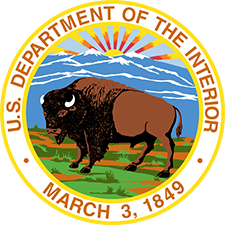Our History

The Founding and Growth of Riverside Indian School
Riverside Indian School, located in Anadarko, Oklahoma, is the oldest federally operated Native American boarding school in the United States. Established in 1871, the school has served generations of Indigenous students, evolving over time to become a respected institution that blends academic excellence with cultural awareness.
The school’s origins can be traced back to Quaker missionaries, who founded what was then called the Wichita-Caddo School in 1871. Located at the old Wichita Indian Agency, the school was part of the federal government’s early efforts to educate Native American children. By 1878–79, Riverside was relocated one mile west to its current site along the Washita River, where it became a permanent and structured learning environment under the official name Riverside Indian School.
For decades, Riverside primarily served children from the Wichita, Caddo, and Delaware tribes. In 1922, after the Rainy Mountain Mission School closed, the school expanded its enrollment to include Kiowa students. In 1945, Riverside further diversified when Navajo students began attending. Today, the school serves students from over 75 different tribal nations, making it one of the most culturally diverse Native American schools in the country.
Throughout its long history, Riverside has faced and overcome numerous challenges. In its early years, students endured the strict assimilation policies of the federal government’s Indian boarding school system. Despite this, Riverside became a place where Native students from different tribes could remain together, creating a unique environment where cultural exchange was possible. Unlike many public schools of the era that segregated Native students from white students, Riverside students were able to maintain a sense of identity and belonging among their peers.
The Learning Environment at Riverside Indian School
Riverside Indian School has continually adapted its curriculum and teaching methods to reflect the changing educational needs of Native American students. In the early years, like many Indian boarding schools, Riverside's curriculum emphasized agricultural training. By 1910, vocational education became the primary focus, preparing students for jobs in trades such as carpentry, mechanics, and home economics.
By the 1960s, Riverside shifted toward academic achievement, introducing cultural programming that allowed students to celebrate and learn about their own heritage while receiving a strong education. By the 1990s, the school transitioned toward college preparation, ensuring that Riverside graduates were well-equipped for higher education and professional careers.
Today, Riverside offers a comprehensive educational experience for grades 4 through 12. The school is accredited by the State of Oklahoma and the North Central Association of Secondary Schools and Elementary Schools, ensuring students receive a high-quality education. Riverside's athletic programs follow the guidelines of the Oklahoma Secondary Schools Activity Association, providing students with opportunities for competition and teamwork.
Cultural preservation remains a core part of the school's mission. Students are encouraged to embrace their heritage through language courses, cultural events, and traditional arts programs. The school’s motto, "Once a Brave, Always a Brave," reflects the pride and lifelong connection students develop at Riverside.
A Diverse Native American Community
One of Riverside Indian School's most defining aspects is its richly diverse student body, which represents more than 75 different tribal nations from across the United States. This diversity creates a unique and enriching environment where students can learn from their teachers and each other.
Unlike many historical boarding schools that sought to strip Native students of their cultural identities, Riverside has evolved into a space where multiple traditions coexist. Students bring their languages, customs, and histories into the classroom, creating an environment where cultural exchange is a daily experience. This diversity fosters mutual respect and understanding among students, helping them develop a broader perspective on Native identity and shared history.
Additionally, the school's faculty and administration are predominantly Native American, ensuring that leadership and decision-making reflect the needs and values of the students. This representation helps students feel understood and supported as they navigate their educational journeys.
The sense of community at Riverside is one of the school’s strongest qualities. Students often form lifelong friendships, and many alumni return to support the school as mentors, staff, or educators. The school remains dedicated to helping students become successful adults who give back to their families and tribal communities, ensuring that the next generation of Native leaders is well-prepared for the future.
Connections to Other Tribes and School Communities
Riverside Indian School plays a vital role in connecting Native communities across the country. With students from many different tribes, the school serves as a cultural hub, bringing together diverse traditions while fostering unity among Indigenous people.
Throughout its history, Riverside has maintained close ties with other Native schools, tribes, and educational institutions. The school participates in regional and national events that promote Native education, cultural preservation, and leadership development. Riverside students attend intertribal gatherings, language preservation conferences, and powwows, ensuring they remain engaged with broader Native networks.
In addition to its tribal connections, Riverside collaborates with universities, colleges, and vocational programs, providing pathways for to higher education. The school’s college prep initiatives help students transition smoothly into university life, and partnerships with community colleges allow students to earn credits before they even graduate.
Honoring the Past, Embracing the Future
Riverside’s legacy as the oldest federally operated Indian boarding school continues to evolve. While the government’s assimilation policies shaped its early history, the school has since been reclaimed by Native communities as a place where students can thrive academically, socially, and culturally. Through its deep connections to Indigenous communities, its commitment to cultural preservation, and its dedication to student success, Riverside Indian School remains a beacon of education and empowerment for Native youth.
From its founding in 1871 to its modern-day status as a leader in Native education, Riverside Indian School has demonstrated resilience, adaptability, and an unwavering commitment to its students. As the school continues to grow, it remains dedicated to honoring the traditions of its students while preparing them for a bright and promising future.



